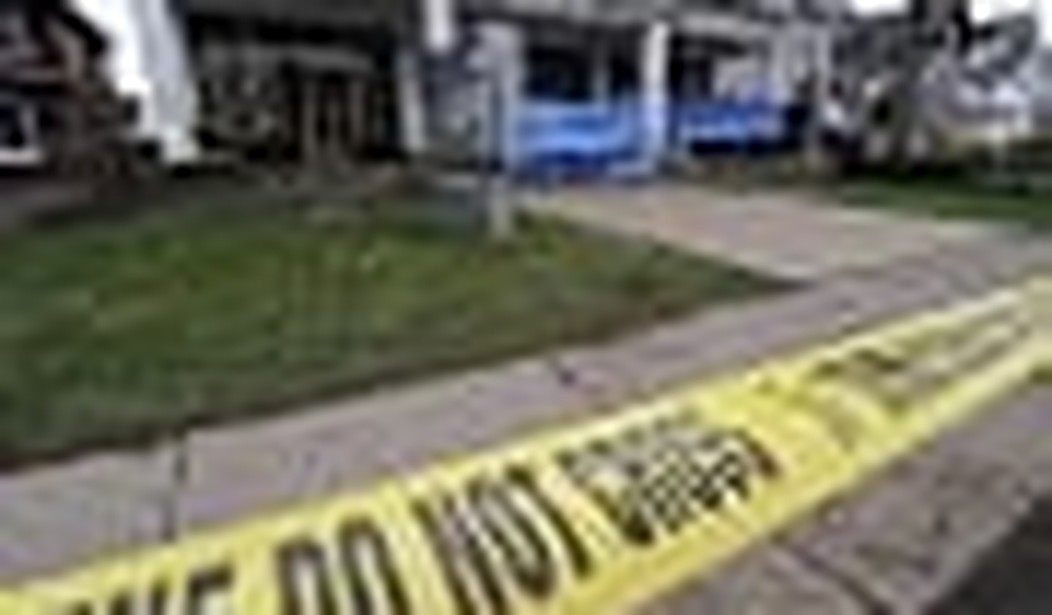I’m sure you’ve noticed that suddenly a lot of mass murders have been taking place with guns — and they aren’t all happening in America.
A gunman murdered 15 at a school in Germany last month. On April 10, a Greek college student in Athens killed three people before killing himself. The very next day a gunman in Rotterdam shot and killed one person and wounded three others after opening fire on passers-by from a café. There have also been a couple of mass murders in Finland in the last couple of years. Here in the United States, 13 people were killed by a lone gunman in Binghamton, New York, on April 3, and three police officers were shot and killed in Pittsburgh the following day. What’s going on?
While these tragedies garner enormous coverage, they are actually pretty unusual. There were just under 16,000 murders in the U.S. in 2007, with just over two-thirds of those involving guns. All of these high-profile mass murders combined would be a fraction of 1% of murders for the year. If you want to make public policy, letting the mass murders drive it makes no sense.
Why are these attacks clumped together like this? Between 1989 and 1991, we had a similar spate of attacks, which were likely due to too much media attention. Social commentators have known for a long time that highly-publicized crimes provoke copycats. This dates all the way back to Herostratus burning the Temple of Artemis at Ephesus in 356 B.C. because he wanted to be famous. (We still know his name; it worked).
From 1989 to 1991, Time and Newsweek provided disproportionate coverage of mass murders with guns because they were banging the drum for restrictive gun control. They virtually ignored much larger mass murders committed with gasoline. They only restrained themselves when one mass murderer, George Wesbecher, left behind a copy of Time devoted to a previous mass murderer with the headline “Calendar of Senseless Shootings” underlined. And in this same period, there were other mass murderers who carried around newspapers with articles about previous mass murderers and who were clearly seeking publicity.
I don’t claim that every one of these recent killers was driven by the desire to gain his 15 minutes of fame. The murders in Pittsburgh appear to have been unplanned, the result of an escalating domestic dispute. But the murders in Binghamton, based on the letter written by the killer to a local TV station immediately prior to the attack, fit this copycat model. Wong was insane (probably a paranoid schizophrenic, as is the case with many of these perpetrators) and intent on seeking attention for his complaints. And he got it, didn’t he?
Should the news media ignore these horrendous but atypical crimes in the hope that they won’t put ideas into the heads of people who want attention? Probably not. But they also don’t need to overstate their importance relative to the 99+% of murders that don’t fit this pattern. I’m sure that editors can justify that pushing a few crazy people over the edge into a murderous rage is okay, because it will help create public demand for restrictive gun control. But is likely to only accelerate demand for handguns and concealed handgun permits in the states that allow law-abiding adults to get permits. Why? Because most Americans know that gun control laws don’t do much to disarm crazy people intent on mass murder. Being able to return fire is a lot more effective, as Jeanne Assam (pronounced “awesome”) demonstrated in a Colorado Springs church in 2007, when she disabled a heavily armed, mentally ill young man. He had already committed four murders in the previous 12 hours. Had Ms. Assam not shot him, he might have killed dozens more inside the church.
There is something that can be done about the problem of mass murder. These random rampages that scare the wits out of us are committed overwhelmingly by people who, in 1960, would have been hospitalized before they became a tragic headline. Today they wander the streets, often dying from disease or violent attacks. Not every mentally ill person is dangerous to others; many are just dangerous to themselves. However, there is much more overlap between psychosis and mass murder than between gun ownership and mass murder.
If the goal is to reduce these terrifying incidents, the most sensible solution should not involve treating our society as if it were a mental hospital (where you don’t trust the patients with anything sharper than a crayon). Instead, we should be trying to hospitalize those who are so clearly mentally ill that they are incapable of providing themselves with shelter, food, and clothing. Our current system is not only inhumane (causing much of the homelessness problem that now plagues American cities), it is irrational. Instead of hospitalization, we give many of these severely mentally ill people a Social Security disability check to spend as they wish. These are often people who think they are 2,500-year-old vampires, or see dragons flying by the window, or believe that there are satellites that can turn back time. Is it any surprise that some of them think it would make more sense to use those checks to buy guns and ammunition, as Patrick Purdy did before murdering five children in a Stockton schoolyard?









Join the conversation as a VIP Member